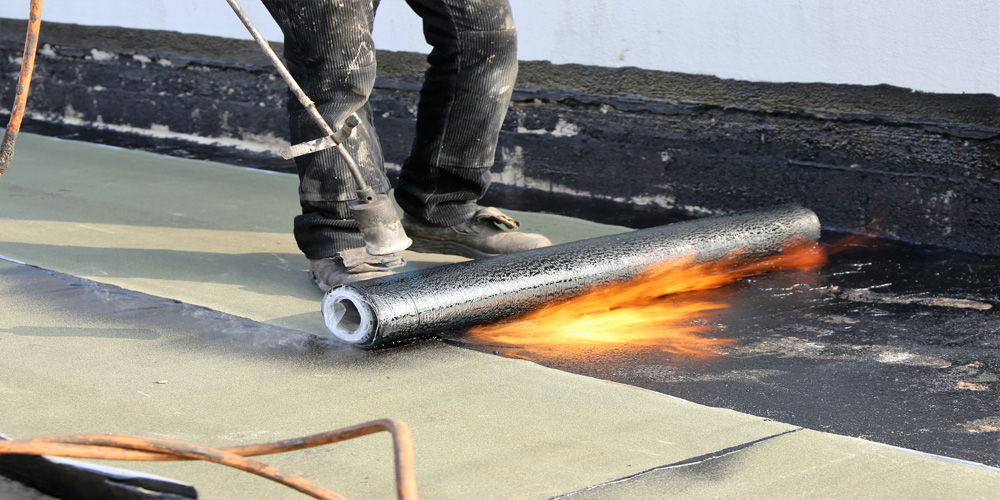Importance of Flat Roof Maintenance
Flat roofs, due to their design, require consistent and diligent maintenance to ensure longevity and functionality. Unlike pitched roofs, flat roofs collect more debris and experience greater exposure to the elements, making them susceptible to various forms of damage. Regular maintenance, including inspections and timely repairs, is crucial to prevent minor issues from escalating. Proactive upkeep can help avoid water damage, structural degradation, and unnecessary expenses down the line.
Benefits of Timely Roof Replacement
Timely roof replacement provides numerous benefits that can substantially outweigh the initial investment. A new flat roof enhances the structural integrity of the building, ensuring safety and prolonging the building’s overall lifespan. Moreover, it improves energy efficiency by providing better insulation, which can lead to reduced energy bills. Timely replacement also helps maintain the building’s aesthetic appeal and market value, making it a wise financial decision for property owners.
Overview of the Signs to Watch For
Recognising when a flat roof needs replacement is paramount to preventing severe damage. There are five key signs to watch for:
- Visible Water Pooling: Water pooling can indicate drainage issues and potential damage to the roofing material.
- Cracks and Blisters in the Roofing Material: These can compromise the roof’s integrity and worsen over time if not addressed.
- Interior Water Stains or Leaks: Signs of water infiltration inside the building can lead to significant structural damage.
- Aging and Weathering: The typical lifespan of a flat roof can be affected by aging and weather conditions, leading to deterioration.
- Increase in Energy Bills: A deteriorating roof affects energy efficiency, causing higher heating and cooling costs.
Understanding these signs and acting promptly can save property owners from expensive repairs and the inconveniences of unexpected roofing failures. By keeping these indicators in mind, one can ensure that their flat roof remains in optimal condition and provides lasting protection.
Visible Water Pooling
Explanation of why Water Pooling Occurs
Water pooling on flat roofs typically happens when the drainage systems are ineffective or the roof itself has developed dips and depressions. These issues arise from several factors, such as inadequate slope design, accumulation of debris that clogs drains, or the natural settling of the building under the roof. Poor installation or materials that don’t provide proper waterproofing can also contribute to water retention on the roof’s surface.
Potential Consequences of Standing Water
The presence of standing water can have severe ramifications for a flat roof. Prolonged exposure to water can cause the roofing material to deteriorate faster than expected. As the water remains stagnant, it increases the likelihood of leaks penetrating the interior, leading to water damage in the building’s structure and potentially fostering mould and mildew growth. Over time, the additional weight of the standing water can stress the structural integrity of the roof, risking a partial or complete collapse in extreme cases.
How to Identify and Assess Water Pooling Issues
Detecting and assessing water pooling involves both visual inspections and utilising proper assessment tools. During or after a rainfall, observe the roof to see if any water remains at various spots longer than 48 hours. Mark these areas for further inspection. If possible, use infrared thermography to pinpoint hidden water under the roofing membrane. Periodic checks for debris accumulation around drains and roof edges are vital. Furthermore, employing a professional to evaluate these aspects ensures that all potential issues are thoroughly addressed to prevent long-term damage.
By understanding and addressing water pooling, the overall health of your flat roof can be maintained effectively for years. This attention to minor details can preclude major issues and the need for extensive repairs.
Cracks and Blisters in the Roofing Material
Common Causes of Cracks and Blisters
Cracks and blisters in flat roofing materials are often a consequence of prolonged exposure to the elements, substandard construction practices, or natural aging. Factors such as fluctuating temperatures can cause expansion and contraction of the roofing materials, leading to cracks. Blisters, on the other hand, are usually caused by trapped moisture within the roof layers. This moisture can get trapped between the layers due to poor adhesive application or inadequate ventilation.
How These Issues Compromise Roof Integrity
Cracks and blisters may appear harmless initially, but they can significantly compromise the integrity of your flat roof over time. Cracks allow water to penetrate the roofing material, which can lead to rotting of the underlying structure and eventual leaks inside the building. Blisters can lift the roofing membrane, making it more susceptible to wind damage and further water infiltration. These issues can exacerbate the roof’s deterioration, escalating repair costs and potentially causing extensive damage to the building’s interior.
Importance of Regular Inspections for Early Detection
Regular inspections are crucial in identifying cracks and blisters early on, preventing minor issues from turning into major problems. Inspections should be done at least twice a year and after any significant weather events. During these inspections, look for small hairline cracks, surface blisters, and any areas where the roofing material appears raised or uneven. Prompt identification and professional intervention can mitigate damage and extend the roof’s lifespan.
Transitioning to the next crucial indication, these inspections will also help in identifying other critical signs, such as existing interior water stains or leaks, ensuring comprehensive roof health management.
3. Interior Water Stains or Leaks
Signs of Water Infiltration Inside the Building
One of the most telling signs that your flat roof may need replacement is the presence of interior water stains or leaks. These signs often appear as discolourations or damp patches on ceilings and walls. In severe cases, you might even notice water dripping inside the building during or after a rainstorm. Such leaking is a strong indication that your flat roof’s protective layers have been compromised, allowing water to seep through.
Potential Damage to the Building’s Structure and Contents
When water infiltrates a building, it can cause extensive damage to both the structure and its contents. Prolonged water exposure can lead to the rotting of wooden elements, weakening their integrity. This affects everything from support beams to floorboards. Additionally, moisture can promote the growth of mould and mildew, which could pose serious health risks to inhabitants. The indoor air quality may deteriorate, leading to respiratory issues, allergies, and other health concerns. Office equipment, furniture, and stored materials can also suffer water damage, leading to costly repairs or replacements.
Importance of Addressing Leaks Promptly
Addressing leaks promptly is crucial to preventing further damage and maintaining the structural integrity of the building. Ignoring these signs can lead to more severe issues down the line, such as foundational damage, electrical system short circuits, and an overall decrease in property value. Immediate intervention often involves engaging roofing professionals to perform detailed assessments and undertake necessary repairs or, if required, a complete roof replacement.
Identifying the deeper issues in your flat roof that lead to interior leaks will not only safeguard your assets but also enhance the longevity and efficiency of your building’s infrastructure.
4. Aging and Weathering
Typical Lifespan of Flat Roofs
The lifespan of a flat roof typically ranges from 10 to 25 years, depending on the materials used, installation quality, and maintenance practices. High-quality materials and professional installation can ensure longer durability, while regular maintenance helps in early detection and mitigation of potential issues.
Signs of Age-Related Deterioration
As flat roofs age, several signs of deterioration may become evident:
- Membrane Wear and Tear: The protective membrane can start to crack, peel, or lose its elasticity due to age.
- Curling or Buckling: Older roofing materials may curl or buckle, signalling compromised structural integrity.
- Visible Sagging: A noticeable sag in the roof structure indicates potential weakness or water damage beneath the surface.
- Discolouration: Changes in the roof’s colour, such as dark spots or algae growth, can indicate age-related deterioration.
Impact of Weather Conditions on Roof Longevity
Weather conditions play a significant role in the longevity of flat roofs:
- Sun Exposure: Prolonged exposure to UV rays can cause materials to become brittle and lose their efficacy.
- Rain and Snow: Accumulation of rain and snow can lead to water pooling and increased pressure on the roof, accelerating wear.
- Temperature Fluctuations: Frequent changes in temperature can cause roofing materials to expand and contract, leading to cracks and other damage.
Understanding and monitoring these aspects are crucial in maintaining the structural integrity of a flat roof and ensuring its longevity. It’s always wise to undertake timely inspections and consult roofing experts when signs of aging and weathering appear.
5. Increased Energy Bills
How a Deteriorating Roof Affects Energy Efficiency
An often-overlooked sign that your flat roof may need replacing is a noticeable increase in energy bills. A deteriorating roof can significantly impact your building’s energy efficiency. Common issues such as leaks, poor insulation, and membrane degradation compromise the roof’s ability to regulate interior temperatures effectively.
Signs of Poor Insulation and Heat Loss
A failing roof often exhibits signs of poor insulation, such as:
- Increased interior temperature fluctuations
- Drafts near ceilings and walls
- Hot or cold spots within the building
These symptoms indicate that the roof’s insulation properties are no longer effective. Heat loss during winter and heat gain in summer result in increased energy consumption to maintain a comfortable indoor environment.
Benefits of a New Roof for Heating Efficiency
Replacing your old, deteriorating flat roof can offer several benefits for heating efficiency:
- Improved Insulation: Modern roofing systems come with advanced insulation technologies that provide better thermal regulation.
- Energy Savings: By reducing heat loss and gain, a new roof can significantly lower your heating and air conditioning costs.
- Environmental Impact: Enhanced energy efficiency reduces your building’s carbon footprint, contributing to environmental sustainability.
Recognising the importance of these factors can guide you towards making an informed decision about roof replacement. Addressing these energy inefficiencies often necessitates expert consultation to ensure optimal solutions are implemented.
Making the Decision to Replace
Importance of Consulting Roofing Experts
When considering the replacement of a flat roof, consulting roofing experts is crucial. Professional roofers can provide a comprehensive assessment of your roof’s current condition, offer tailored recommendations, and ensure that any replacement work meets industry standards. Their expertise minimises the risk of future problems and ensures that the roof replacement process is efficient and cost-effective. Engaging experts also gives you access to the latest roofing technologies and materials suited to extend the lifespan of your new flat roof.
Long-Term Benefits of Roof Replacement
Replacing a flat roof offers several long-term benefits. A new roof vastly improves structural integrity, ensuring protection against harsh weather conditions. Modern roofing materials can offer enhanced waterproofing, energy efficiency, and durability compared to older systems. Installing a new roof can significantly boost your property’s value and curb appeal. Additionally, a well-installed replacement roof decreases the likelihood of costly repairs and maintenance over time, translating to long-term financial savings.
Considerations for Choosing a New Flat Roof System
Selecting a new flat roof system requires thoughtful consideration of various factors. Evaluate the material options available, such as EPDM, TPO, PVC, or modified bitumen, considering their durability, cost, and suitability for your specific climate and building type. Additionally, assess the insulation properties and energy efficiency of each material. A reputable roofing expert can guide you in choosing a system that balances performance with budget. Furthermore, consider the warranty offered by manufacturers and installers, as a comprehensive warranty can provide peace of mind and additional protection for your investment.
Making an informed decision to replace your flat roof ensures the long-term health and efficiency of your building, bringing both peace of mind and tangible benefits.



